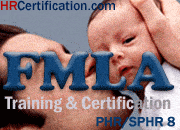
How to Handle Employee Complaints Under FMLA/ADA
10/26/2025Employee complaints under the FMLA or ADA can escalate quickly if not handled correctly. Whether it’s a dispute over leave, accommodation, or retaliation, HR must follow a consistent, well-documented process that protects both the employee and the organization. This guide breaks down the key steps to managing FMLA and ADA complaints — from intake and investigation to resolution — and shows how strong documentation and communication can keep your company compliant and protected.
Why FMLA and ADA Complaints Require Extra Care
When an employee raises a complaint related to the Family and Medical Leave Act (FMLA) or the Americans with Disabilities Act (ADA), it demands a higher level of scrutiny than a typical workplace grievance. These complaints often involve complex, overlapping legal protections that carry significant compliance risk. An employee with a serious health condition may be entitled to job-protected leave under the FMLA and simultaneously qualify for reasonable accommodations under the ADA.
Mishandling even a single step in the process can have serious consequences. A delayed response, a breach of medical confidentiality, or an unintentional act of retaliation can quickly trigger an investigation from the Equal Employment Opportunity Commission (EEOC) or an audit by the Department of Labor (DOL). For HR professionals, this means a standard complaint procedure is not enough; a specialized, legally-informed process is essential.
Understanding the Legal Framework Behind Complaints
To handle these complaints effectively, it's crucial to understand the distinct rights each law provides.
- FMLA: The Family and Medical Leave Act guarantees eligible employees up to 12 weeks of unpaid, job-protected leave per year for qualifying family and medical reasons. An FMLA complaint often alleges interference (discouraging or denying leave) or retaliation (punishing an employee for taking leave).
- ADA: The Americans with Disabilities Act prohibits discrimination against qualified individuals with disabilities. It also requires employers to provide reasonable accommodations to help these employees perform the essential functions of their jobs, unless doing so would cause undue hardship. ADA complaints typically involve a failure to accommodate, unequal treatment, or retaliation.
The most challenging scenarios arise when a single medical issue triggers protections under both laws. For instance, an employee's back injury could be a "serious health condition" for FMLA leave and a "disability" requiring an ADA accommodation. In these cases, HR must coordinate these protections, ensuring the employee receives the full benefit of each law.
Step 1 — Intake and Initial Response
How you handle the first few moments after receiving a complaint sets the tone for the entire process. A prompt, professional, and well-documented intake demonstrates good faith and establishes a strong foundation.
Listen, Document, and Acknowledge Promptly
As soon as a complaint is made—whether verbally or in writing—it must be taken seriously. Listen actively to the employee's concerns without interruption. Immediately log the complaint, capturing the date, time, individuals involved, specific allegations, and any potential witnesses.
Following the initial conversation, provide the employee with a written acknowledgment that their complaint has been received and is being reviewed. This simple step confirms that you are taking action and provides the first piece of your official documentation trail.
Separate the Issue from Emotion
FMLA and ADA complaints are often emotionally charged. The employee may be feeling stressed, frustrated, or unwell. Your role is to remain neutral and focus on the facts. Steer the conversation away from emotional language and toward the specific events and policies in question. While it may be tempting to seek an informal resolution, avoid making promises or agreements that bypass your formal compliance review process.
Step 2 — Gather Information and Review Documentation
With the initial complaint documented, the next step is to gather all relevant information to understand the context and legal obligations.
Review the employee's existing records, including any FMLA medical certifications, past accommodation requests, and related correspondence. This information is highly sensitive and must be handled according to strict confidentiality rules under both laws. All medical information must be kept in a secure file, completely separate from the general personnel file.
If the existing documentation is unclear or insufficient to evaluate the complaint, you may need to request more information. However, you must do so within legal limits. For FMLA, you can seek clarification or authentication of a medical certification from the healthcare provider. For ADA, you can request reasonable documentation to confirm the existence of a disability and the need for an accommodation. Always include the GINA "safe harbor" notice in any request for medical information to instruct providers not to share genetic data.
Step 3 — Engage in the Interactive Process (ADA)
If the complaint involves a request for an accommodation under the ADA, you have a legal obligation to engage in the "interactive process." This is a good-faith, back-and-forth conversation between the employer and the employee to identify a reasonable accommodation.
This is a collaborative dialogue, not a one-sided decision. Discuss the employee’s limitations and explore feasible accommodations that could help them perform their job. Options might include modified work schedules, adjustments to the workspace, reassignment to a vacant position, or a period of unpaid leave.
Document every discussion meticulously. Your notes should include the date of the meeting, who attended, what accommodations were discussed, which were offered, and whether the employee accepted or refused them. This record is your primary evidence that you fulfilled your duty to engage in the interactive process.
Step 4 — Evaluate FMLA Entitlement and Coordination
For complaints related to leave, you must conduct a thorough FMLA analysis. First, confirm the employee’s eligibility by verifying they have worked for the company for at least 12 months, have accumulated at least 1,250 hours of service in the past 12 months, and work at a location with 50 or more employees within a 75-mile radius.
If the employee is eligible and has a qualifying condition, you must formally designate the leave as FMLA-protected and provide the employee with a written Designation Notice.
When both laws apply, your documentation must show how you are coordinating them. For example, if an employee requests leave for surgery, you would designate the time off as FMLA leave while also engaging in the interactive process to determine if any accommodations, including additional leave beyond 12 weeks, would be reasonable upon their return.
Step 5 — Maintain Confidentiality and Non-Retaliation
Protecting confidentiality and preventing retaliation are two of the most critical aspects of handling FMLA and ADA complaints.
Limit Access to Information
Information related to a complaint, particularly medical details, must be kept on a strict need-to-know basis. Only HR professionals or designated legal counsel involved in the review should have access to the full complaint file. Managers and supervisors should only be told what is necessary to implement an accommodation or manage a leave schedule, never the employee’s diagnosis or the specifics of their complaint.
Protect Against Retaliation Claims
Retaliation is any adverse action taken against an employee for asserting their rights. It is illegal and is the most common charge filed with the EEOC. You must ensure that no supervisor alters an employee’s job duties, changes their schedule, or otherwise treats them differently because they filed a complaint. Reinforce your company’s anti-retaliation policy through regular training and immediately investigate any allegations of punitive behavior.
Step 6 — Resolve and Communicate Outcomes Clearly
Once you have gathered all the facts and completed your analysis, you must make a decision and communicate it clearly.
Deliver your findings and the resolution in writing. The communication should be professional, factual, and direct. It should summarize the complaint, the information that was reviewed, the conclusion reached, and any actions that will be taken. If you are granting an accommodation or approving leave, outline the specific details. If you are denying a request, you must explain the non-discriminatory business reasons for the denial, such as undue hardship. Where appropriate, your policy should outline an appeal process for employees who disagree with the outcome.
Step 7 — Strengthen Your Complaint-Handling Policy
Every complaint is a learning opportunity. Use the experience to identify and close any gaps in your policies and procedures.
Review your written complaint-handling policies annually with legal counsel to ensure they reflect the latest legal precedents and regulatory guidance. Use real-world (but anonymized) examples from past complaints to train managers on how to identify potential FMLA and ADA issues early and escalate them to HR properly. Your training should emphasize employee rights, the interactive process, and the serious risks of retaliation.
Common Mistakes Employers Make During FMLA/ADA Complaints
Even with the best intentions, it's easy to make a mistake when navigating these complex laws. Common pitfalls include:
- Requiring Unnecessary Medical Documentation: Asking for an employee’s entire medical record instead of specific information related to their condition and need for leave/accommodation.
- Sharing Confidential Details with Supervisors: Telling a manager about an employee’s diagnosis or the nature of their medical treatments.
- Denying Requests Without Documented Analysis: Rejecting a leave or accommodation request without a clear, documented record of the interactive process or a legitimate undue hardship analysis.
- Failing to Track Leave Properly: Inaccurate tracking of an employee’s FMLA balance, leading to improper denial of leave.
Best Practices for Defensible Documentation
In the event of a legal challenge, your documentation will be your most important asset. Your records should be thorough enough to reconstruct the entire complaint process.
- Use a Consistent Format: Create standardized templates for intake forms, interview notes, interactive process logs, and final resolution letters.
- Timestamp Everything: Date and timestamp all notes and communications to create a clear, chronological record of events.
- Maintain Separate Files: Adhere strictly to the requirement to keep ADA/FMLA medical information in a confidential file separate from the general personnel file.
- Follow Retention Rules: Retain all FMLA-related records for a minimum of three years and ADA-related records for at least one year after an employee's termination.
Key Takeaways for HR Compliance
Handling FMLA and ADA complaints is a high-stakes responsibility that demands precision and care. By treating every complaint seriously, responding promptly, and adhering to policy, you can manage these situations effectively. Always coordinate ADA and FMLA obligations, and never forget that neutrality, confidentiality, and meticulous documentation are your best defenses against legal risk.
Review our guide to handling complaints the right way — and protect your organization from costly ADA and FMLA violations.





Strong documentation is the backbone of HR compliance. Every hiring decision, leave request, or performance discussion should be backed by clear, consistent records. Following HR documentation best practices not only protects your organization during audits or disputes — it also builds transparency and trust across your workplace. This guide breaks down how to document effectively, stay compliant, and reduce legal risk at every stage of the employee lifecycle.
...
Every HR professional eventually faces it — a workplace complaint that demands a fair, thorough investigation. Whether it involves harassment, discrimination, or policy violations, your response defines both compliance and culture. This guide walks you through how to conduct an internal HR investigation step-by-step — from intake and interviews to documentation and corrective action — so you can protect employees and your organization.
...



